This is a Menger Sponge. It is made from plastic canvas.
A Menger Sponge is a 3D fractal. It is named after Karl Menger. The basic idea is that you take a cube and remove a square tunnel from the centre, in all three directions; then you remove a square tunnel, in all directions, from the cubes you have left. Theoretically you can keep on doing this to infinity. The volume gets increasingly small; the surface area gets increasingly large.
In 2014 Steve, Ben and I were involved with the MegaMenger project, which used business card-size pieces to make small cubes which were joined together to make various levels of sponge. If you want to know the details go to the web site where you will find information from round the world.
At the time I decided to make a small pastic canvas version. It proved to be very challenging. I could not make a complete face in one piece because of the complications of what happened on the inside. There are 20 cubes in the finished sponge and each of those has a cross-shaped piece inside to form the smallest holes. Trying to build up a shape that is based on holes is not easy. Joining the cubes together is also tricky when some parts need to be joined inside. There are 120 6 cm squares and 480 2 cm squares and the whole thing is much heavier than you might imagine.
One advantage of plastic canvas is that it is easy to use different colours on different faces. The colours effectively show where the various holes are.
The card version was made as part of the Science Festival at the Manchester Science and Industry Museum. It was made from specially printed cards. Some of the ‘holes’ are not really holes. They are printed on the cards. As you can see in this construction photo, interior faces which could not be seen, were left blank.
One large cube was assembled in Manchester. Others were made in various parts of the world but, of course, they could never meet to form the next size cube.
The reason that this has come into my mind again now, some six years later, is that, a few weeks ago, Ben and I were having a conversation with Katie Steckles at an online Maths event and she had been thinking about trying to knit a poncho inspired by the Menger sponge (Katie was one of the Megamenger organisers and can be seen in the photo.)
What Katie was wanting to knit was something like one face of the cube. Confusingly, the 2D (flat) version is called a Sierpinski carpet although many people are more familiar with this term referring to triangles with triangular holes.
She had bought yarn, in several colours, but was unsure about how to knit square holes. At the time we tried to explain in words and I started to create a diagram labelled ‘cut the yarn here’, ‘join here’, etc. Ben took a more practical approach and started to knit a miniature version. A poncho can be worn with a straight edge at the front or a point hanging down. Similarly it can be knitted horizontally or diagonally. Ben opted for the diagonal method and created the small pink version there and then. Because Katie had been talking about multiple colours he then went on to a multi-coloured version though I don’t think this was what Katie had in mind.
This is what he said about it himself:
A third order Sierpinski Carpet knit diagonally in garter stitch.
It is made up of 74 pieces, using oddments of yarn.
It does not require any sewing, picking up of stitches or transferring stitches between needles. Only one ball of yarn is attached at any time so there is no problem with multiple strands getting tangled.
Each piece starts with a front-side knit row, which is why on the bottom-most row of each piece there is a clean change from the previous colour. Each piece ends with a front-side knit row and the next colour takes over from it on the back side, which is why on the top-most row of each piece there is a messy change to the next colour.
It soon becomes obvious that the holes will be a problem in a poncho. The biggest hole is always one third of the height and width of the finished piece.
This little fat penguin has a very wide head and neck and is as wide as he is high. The poncho fits over his head but would probably slide down on a human shape. Some of the other holes are also very big.
A small poncho 90 cm wide would have a neck hole 30 cm wide. The next size holes would be 10 cm which is big enough to accidentally put your arm through.
We also have a Menger sponge which we were given by an acquaintance who goes by the delightful name of Threedy Printers. You will probably be surprised by the result when you slice a Menger sponge diagonally. You will find several interesting photos on the Threedy Printers web site.
In 2017 Sam Hartburn won first prize in the cake competition at a Maths event, for her dissected Menger sponge – and it tasted good.
And here is an illusion knitting version. When you look at illusion knitting from directly in front you only see narrow stripes. The image appears when you look from the side.
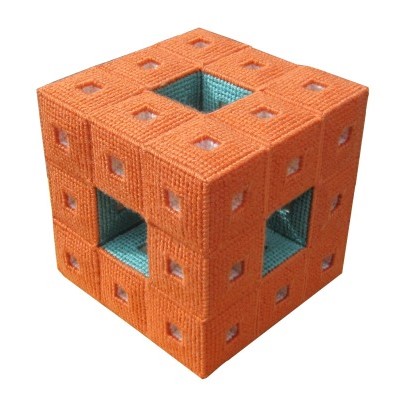
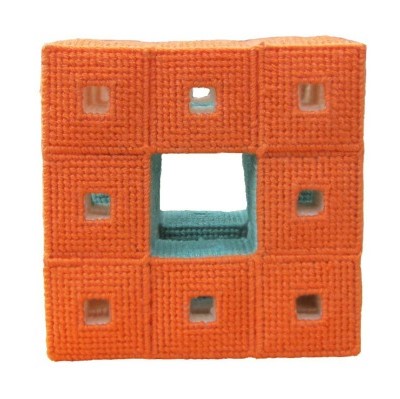
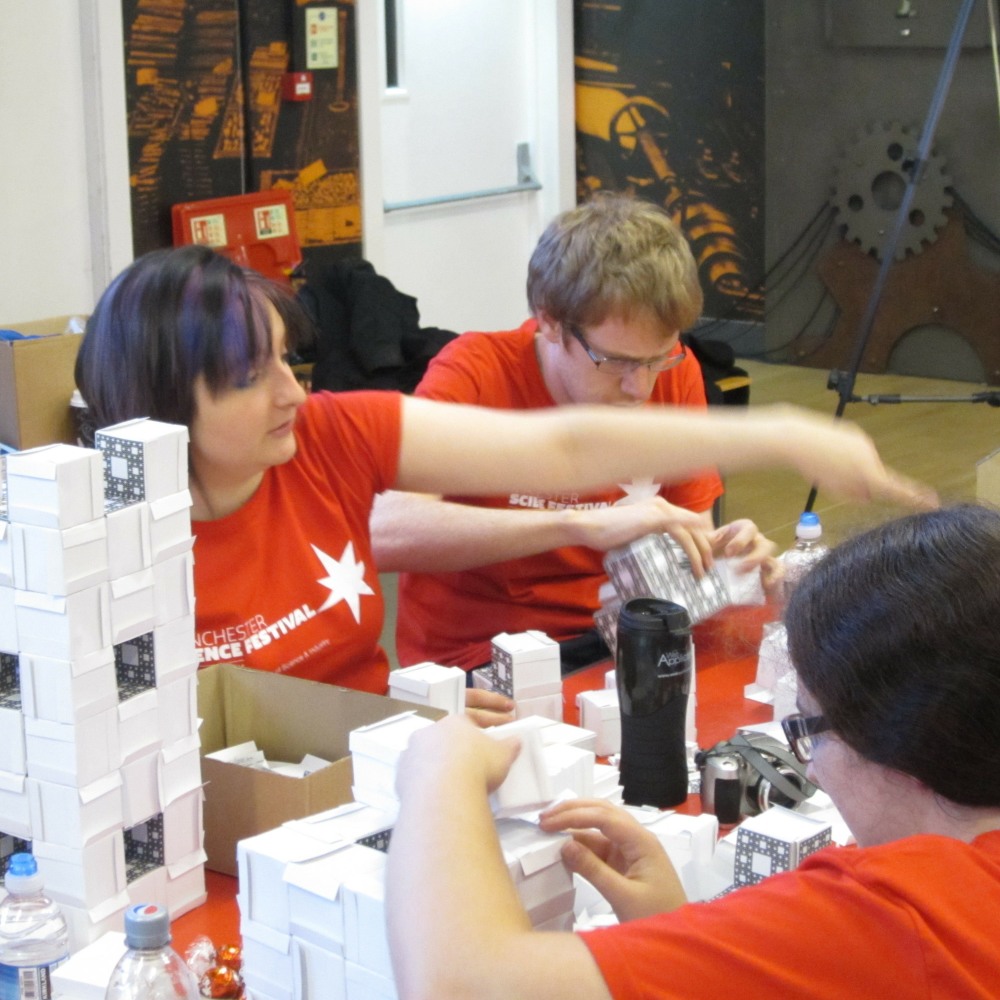
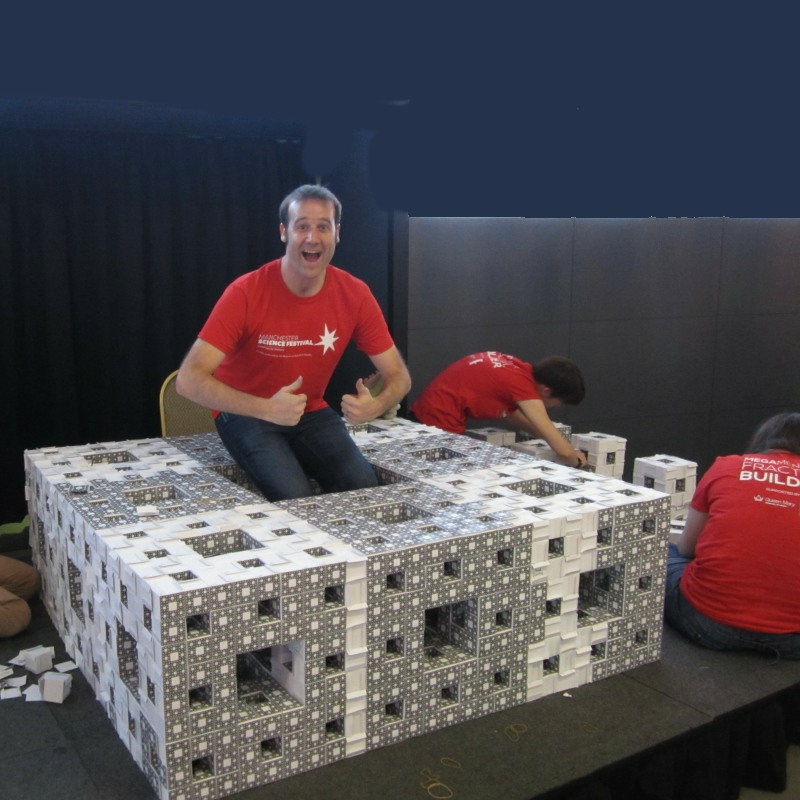
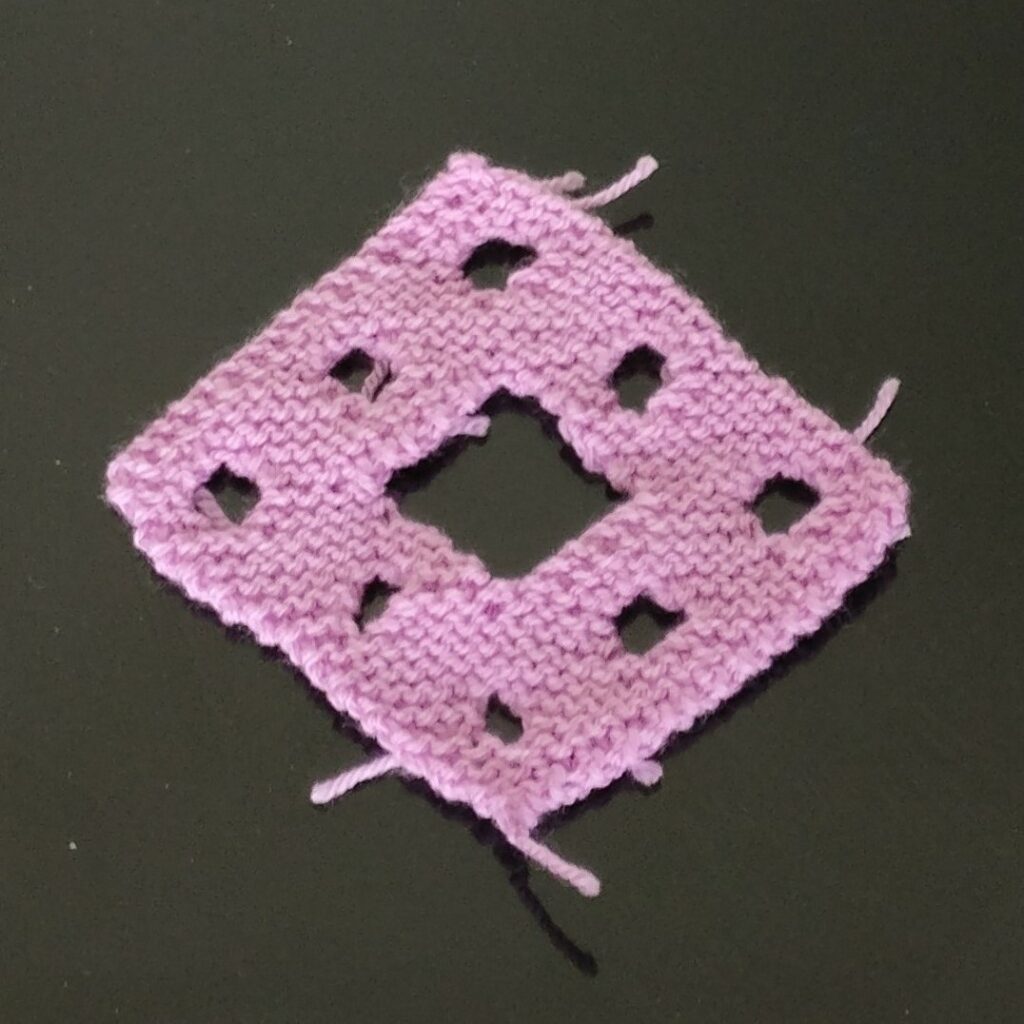
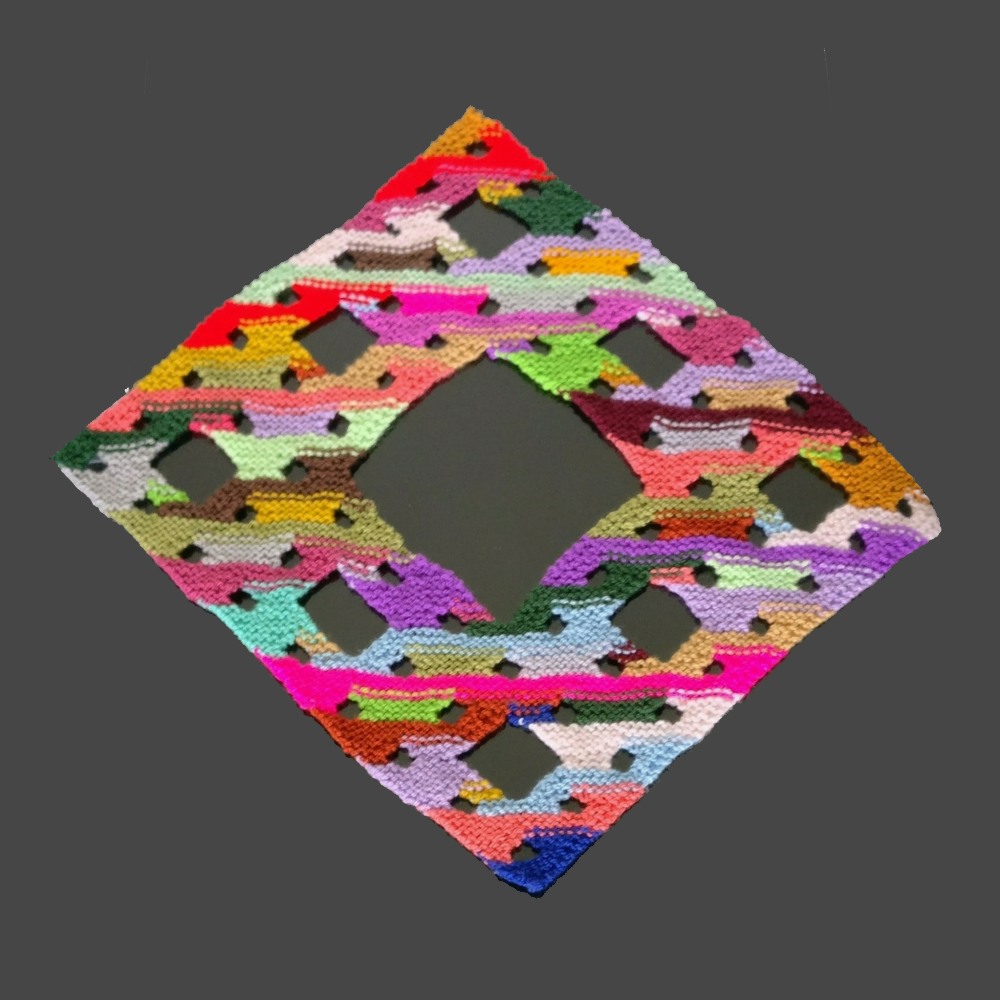

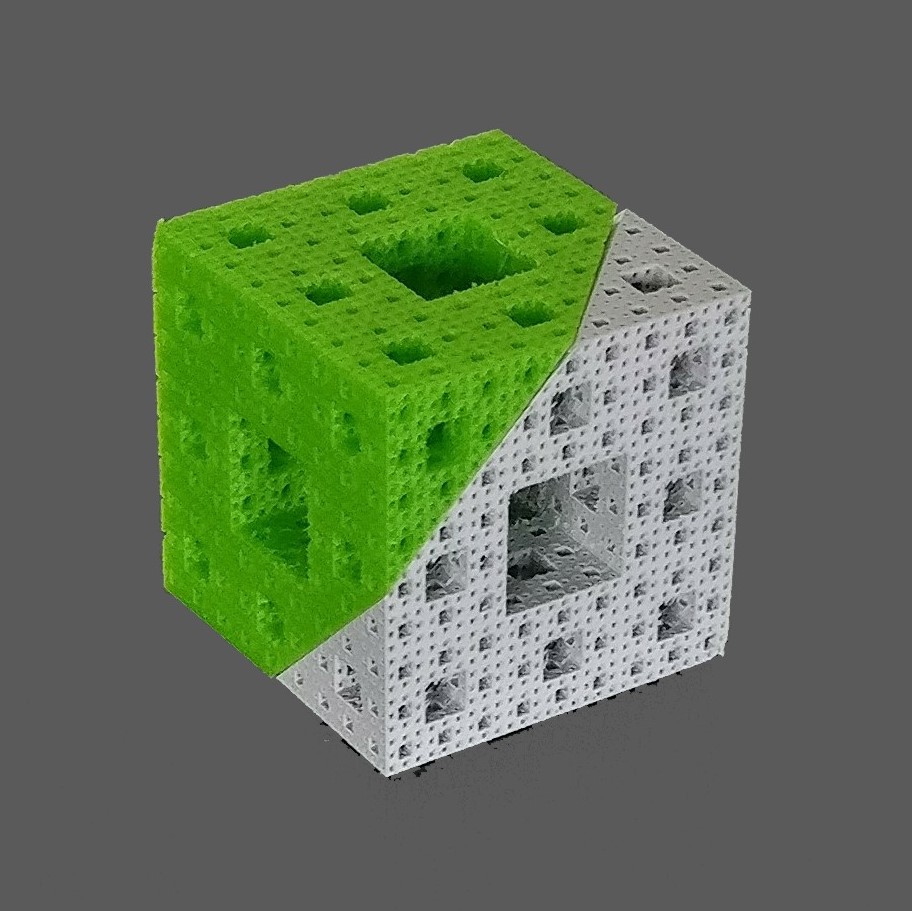

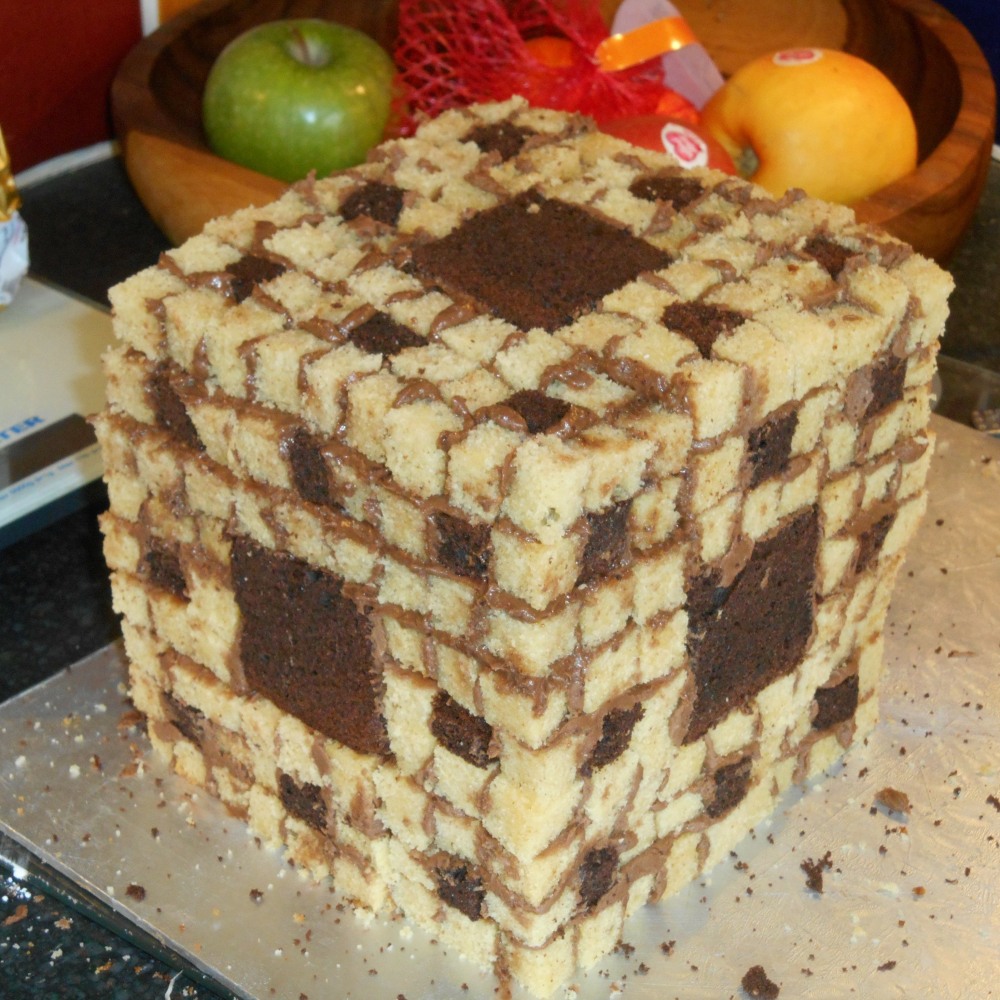
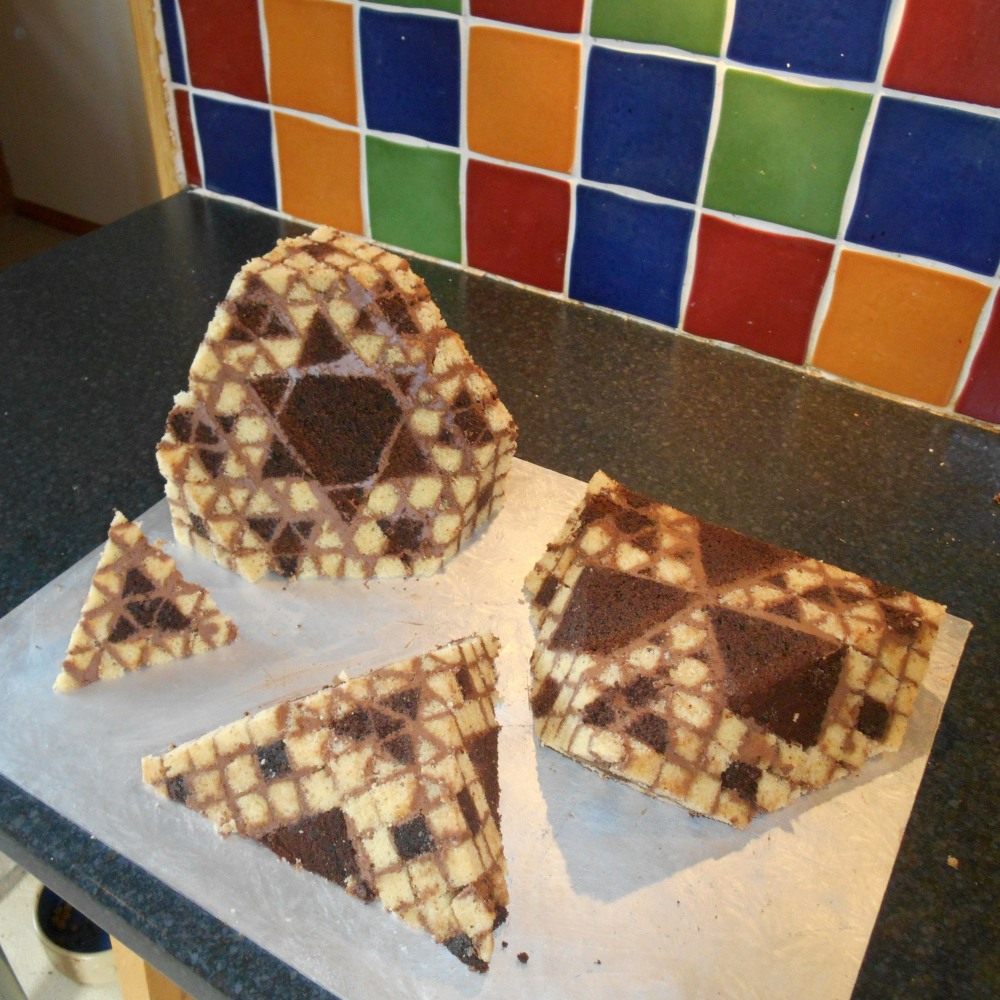
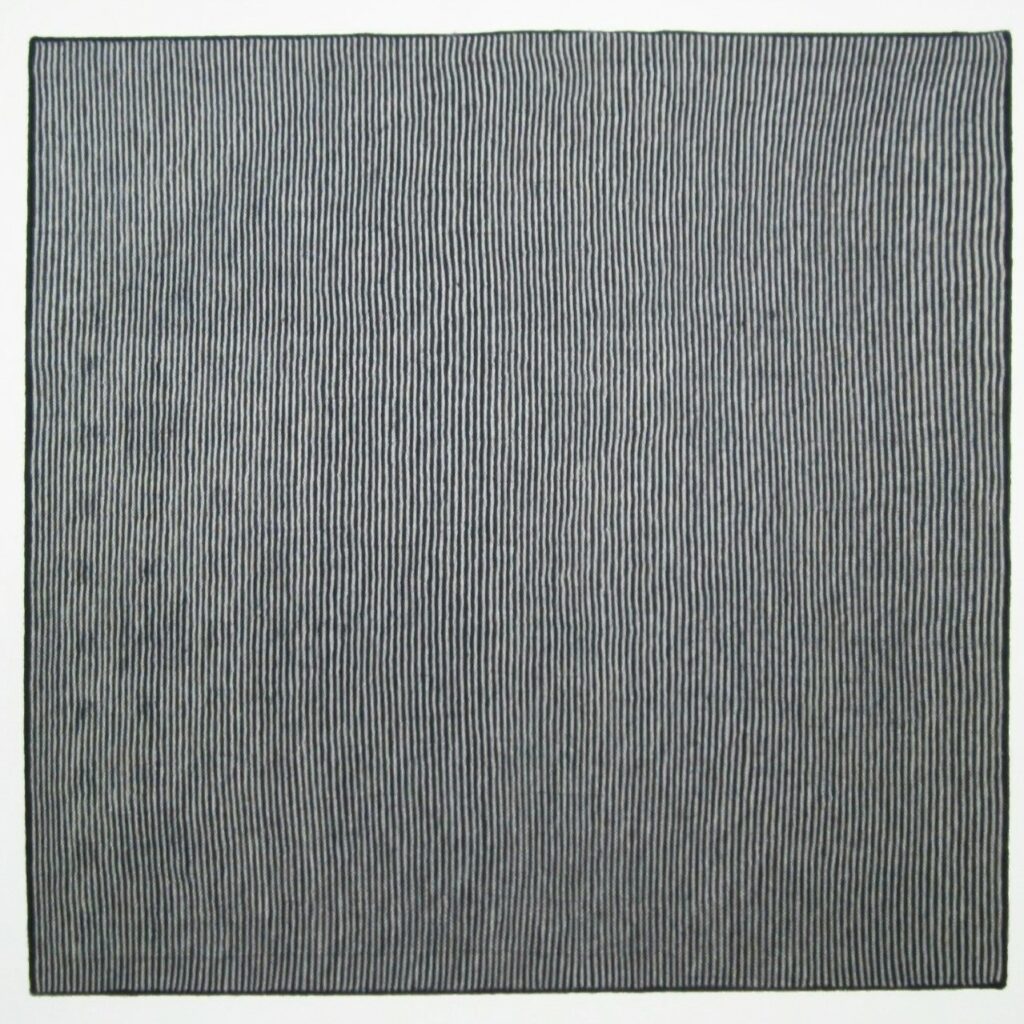
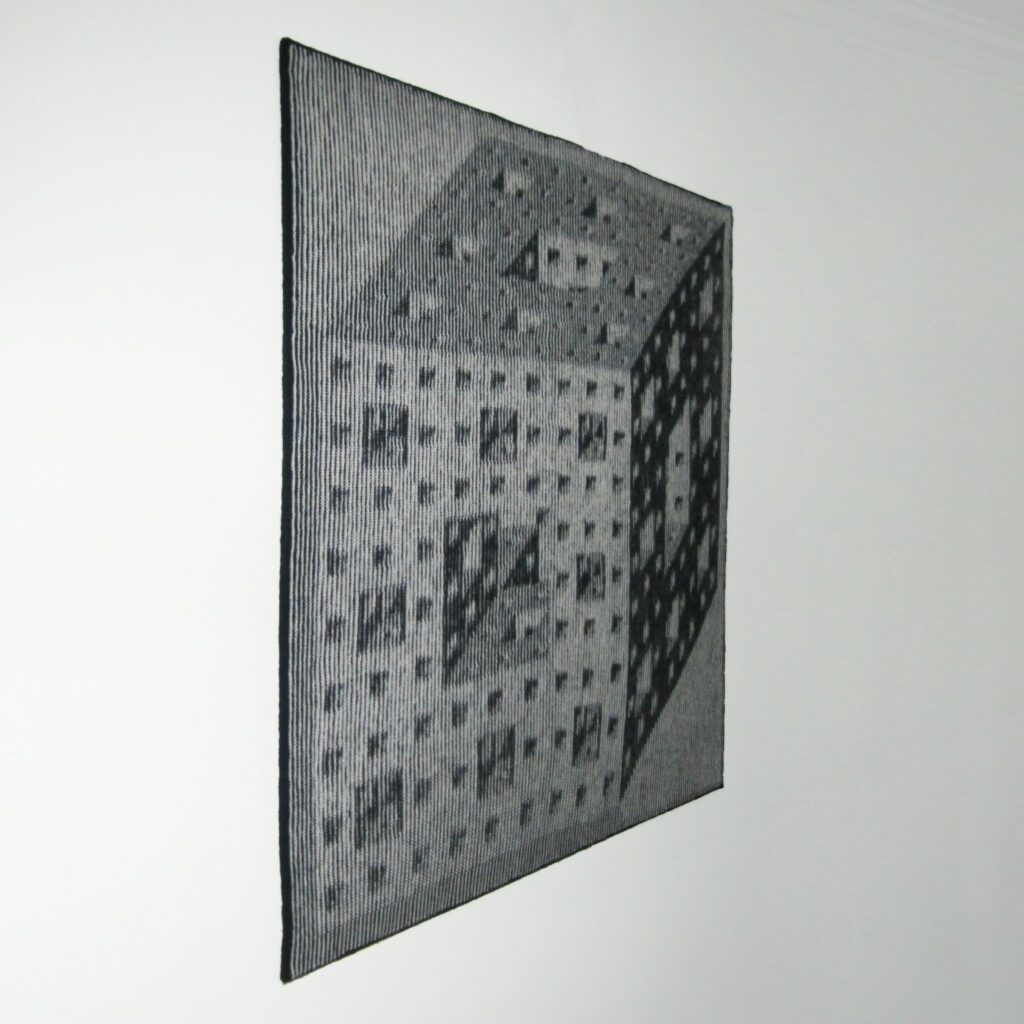
Wow! Incredible work.